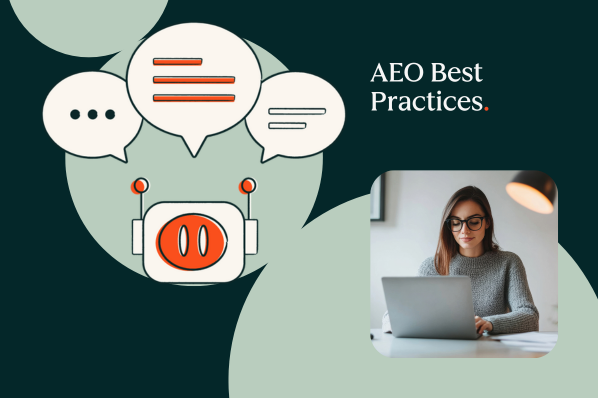But with the advent of AI, we now have tools for AI A/B testing, making experimentation smarter, faster, and infinitely more manageable.
AI A/B testing gets you real-time reports and lets you test multiple hypotheses in a few clicks. To explore the magic that AI brings to A/B testing, I spoke with CRO experts who shared their unique insights.
On top of that, I’ll also take you through the benefits, limitations, and best practices for integrating AI into your A/B testing process.
In this article:
- Why use AI for A/B testing?
- Benefits of AI in A/B Testing
- Limitations of AI in A/B Testing
- How to Use AI for A/B Testing

Why use AI for A/B testing?
A/B testing is a research method used to analyze landing pages, user interfaces, or other marketing prototypes to determine the best version before full rollout.
You split your audience into two groups or more. One sees the control (A; original version), while the other interacts with the variant (B; modified version). Tracking interactions, analyzing results, and refining content follows.
With AI, you automate much of this heavy lifting. You get clear, actionable insights without the usual headaches because AI takes the guesswork out of the following:
- Testing idea development. AI systems, particularly those using machine learning like ChatGPT, can sift through massive datasets. They can help generate fresh test ideas and refine suggestions as you amass more data. Need inspiration? I like this Advertising A/B Testing ChatGPT prompts created by advertising agency Anything is Possible Media Ltd.
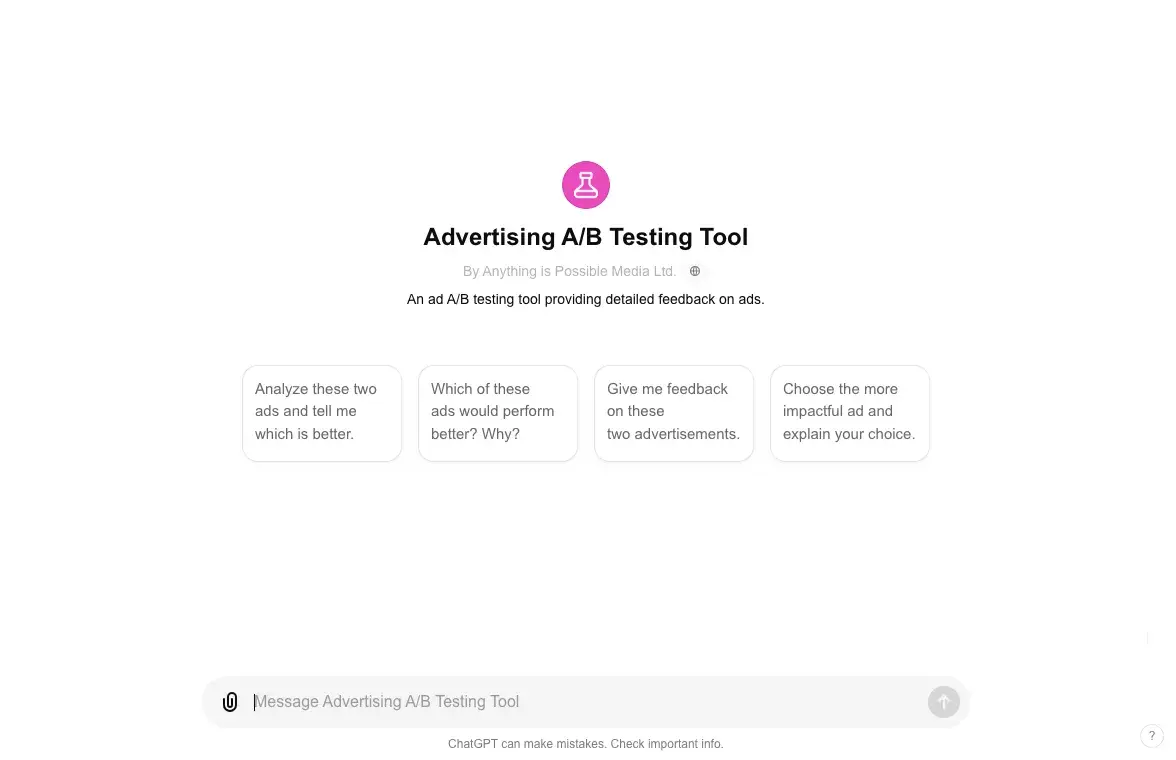
- Data modeling and analysis. Quality data is the foundation for solid and reliable A/B tests. AI helps by cleaning data, i.e., removing errors, duplicates, and inconsistencies that could skew test results.
- Test customization. Say you have a mix of local and foreign visitors on your site. A 50/50 split may only attract local traffic since perks requiring in-store visits won’t appeal to international shoppers. AI ensures this testing only reaches locals.
- Testing process. AI systems like VWO set up experiments, track user interactions in real-time, analyze performance metrics, and offer suggestions for improvement. This automation reduces manual effort and speeds up testing cycles.
- Variant generation. Instead of manually creating each test version, AI generates new variants based on your criteria. It tests multiple ideas at once and prioritizes the most promising ones.
Artificial intelligence can help you sidestep the usual pitfalls of human-led A/B testing. Here’s how AI and traditional methods stack up against each other.

With AI handling everything from setup to analysis, you can ditch the old-school grind for clearer, faster insights. Let’s explore how these efficiencies benefit your A/B testing strategy and set you up for success.
Benefits of AI in A/B Testing
AI streamlines your workflow and generates more accurate insights faster. Here are the top benefits that make AI indispensable for A/B testing.
Faster, Broader Data Reach
Humans take days or even weeks to gather and analyze data. Meanwhile, AI processes heaps of variables — think hundreds of web pages or app feature versions — at lightning speed.
Jon MacDonald, CEO of The Good, has reaped the benefits of this well-oiled efficiency:
“Since we build rapid prototypes quite often, using AI has helped us code A/B tests faster and without bugs. We’re able to produce rapid prototypes quickly, increasing our testing volume and rapidly validating hypotheses.”
AI distinguishes subtle correlations within large datasets, helping you prioritize and evaluate the right variants. Thus, you get results faster and make smarter decisions without getting bogged down by lengthy analysis.
Improved Accuracy
Manual error and cognitive biases can skew the results and interpretation of A/B tests. This study on advertising A/B testing demonstrates how AI improves accuracy in these four dimensions:
1. Targeting. Machine learning lets you create detailed audience segments. Some AI tools even allow for real-time, targeted adjustments based on live data.
2. Personalization. Using Recommendation System and Virtual Assistant technology, AI tailors content to individual preferences. Each A/B test variation only shows up for users with similar interests.
3. Content creation. Generative AI and Natural Language Processing (NLP) enhance ad content quality and diversity. You can leverage it to generate consistent, high-quality ad variations.
4. Ad optimization. Deep Learning and Reinforcement Learning adjust advertising strategies dynamically. It optimizes factors like ad placement, timing, and frequency based on live performance data.
AI improves accuracy at every stage of A/B testing. It fine-tunes your test parameters, ensures optimal testing for all variants, and provides deeper insights into user interactions.
Predictive Capabilities
AI doesn’t stop at analyzing past data. It also predicts future trends to forecast how users respond to changes and make proactive adjustments.
Advanced tools such as Kameleoon use historical data and predictive analytics to anticipate visitor behavior. Kameleoon achieves this with its Kameleoon Conversion Score (KCS™).
If KCS™ predicts visitors browsing high-end products are more likely to convert with Layout A, it ensures they see this layout. Those who are more interested in budget-friendly options may often encounter Layout B.
Your A/B tests aren’t static with AI. You’re not waiting to tweak your tests for next time. Instead, you’re optimizing and delivering the best possible experience instantaneously.
Personalization
Intelligent systems track each visitor’s browsing patterns, purchase history, and preferences. AI leverages this data to tailor variations specifically for different user segments, making A/B tests more relevant and accurate.
Ashley Furniture achieved these outcomes with AB Tasty’s AI-powered platform. According to Matt Sparks, the eCommerce Optimization Manager, their UX teams used it to better understand customer experiences, solve problems, and design new functionalities.
AB Tasty helped cut out Ashley Furniture’s redundant checkout procedures. They tested a variation, prompting shoppers to enter their delivery information right after logging in. This tweak increased conversion rates by 15% and cut bounce rates by 4%.
AI-optimized test results drive tangible benefits — no doubt — but they’re not a cure-all. There are inherent limitations to consider, and we’ll go over them in the next section.
Limitations of AI in A/B Testing
AI can’t solve every problem or guarantee 100% perfect results. Recognizing the human-focused aspects it doesn’t cover allows you to be more prudent in your testing and avoid over-reliance.
Complexity
AI setup involves using advanced algorithms, specialized software, and a skilled technical team. This complexity is challenging for smaller organizations or those without a dedicated data science team.
Start with no-code platforms like Userpilot and VWO if coding isn’t your strong suit. Or, opt for out-of-the-box solutions with multi-channel support like HubSpot if you test across various platforms.
Managing and optimizing A/B tests is much easier with the right tool. So, take the time to assess your needs and select a solution that aligns with your goals.
Privacy and Safety
A 2024 report by Deep Instinct shows that 97% of organizations worry they’ll suffer from AI-generated zero-day attacks.
A zero-day attack exploits a software or hardware vulnerability developers don’t yet know about, leaving no immediate fix.
If such attacks compromise your testing tools, hackers may gain unauthorized access to sensitive data. They may manipulate test results to mislead your strategy or, worse, steal users’ personal information.
Set up real-time monitoring to catch suspicious activities and implement a data breach response plan. Don’t forget to train your team on data security best practices to keep everyone vigilant.
Misinformation and Ethical Concerns
AI has no empathy and intuitive understanding. It can tell you what’s happening, but it can’t always explain why.
Tracy Laranjo, a CRO Strategist quoted in this Convert piece on AI, mentioned that AI doesn't comprehend emotions and context as humans do. She advised:
“The key is to use AI responsibly; I use it to process data more efficiently, automate repetitive tasks, and be a more concise communicator. I embrace it for the doing aspects of my job but never for the thinking aspects.”
Pro tip: Combine A/B testing with other data analysis methods or run multiple tests to gather more insights if need be. However, continue applying sound judgment when interpreting results and making decisions.
How to Use AI for A/B Testing
Below are seven ways AI can transform your A/B testing efforts.
1. Real-Time Data Analysis to Enhance Decision-Making
AI-powered A/B testing platforms can process extensive real-time data insights. They identify complex trends, patterns, and other variables, facilitating more precise tests.
One test design that exemplifies AI real-time analysis is Multi-Armed Bandit (MAB) algorithms. It allocates traffic to better-performing variations up-to-the-minute—think ad placement optimization and content recommendation.
MAB allocates ad impressions in real-time, prioritizing ads that show better performance as user data accumulates. It can also adjust content recommendations based on recent viewer interactions.
Amma, a pregnancy tracker app, used nGrow’s MAB algorithm to reduce user turnover. MAB automated and optimized push notifications in real-time, increasing retention by 12% across iOS and Android users.
The team also gained a better understanding of their user base. They can now better plan for new regions and optimize user engagement.
2. Predictive Analytics to Boost Accuracy
AI predictions prevent you from having misguided hypotheses and testing ineffective variants.
Alun Lucas, Zuko’s analytics managing director, told me how he does it. He used AI tools like ChatGPT to analyze Zuko’s form analytics data and identify the answers to the following questions:
- What are my most problematic form fields?
- How has the data changed since the last period?
- What ideas could we explore to improve the user experience and reduce abandonment in the identified problem fields?
Predictive analytics identify issues in your data forms or user flows before they become major headaches.
3. Personalized Testing to Create Tailored Experiences
AI lets you break down your audience into different segments based on behavior, demographics, and preferences.
For instance, if you plan to recommend fashion products, you can tailor your A/B tests to different customer segments. Think the patrons, bargain hunters, and eco-conscious shoppers.
Ellie Hughes, consulting head at Eclipse Group, found this approach to be valuable for validating prototypes before implementing them on a larger scale.
She tested different algorithms like personalized search ranking and photo-based recommendations. The outcome? It enhanced her clients’ experience and made it a compelling case for further AI investment.
As Hughes notes, “The value wasn’t in the production of an algorithm as an output. It was about the clever framing of an experiment to prove the monetary value of using AI within experiments.”
4. Multivariate Testing to Reveal Useful Insights
A/B testing can scale from only A and B to a full A-Z spectrum of possibilities. In her talk, Ellie Hughes debunked the myth that A/B testing is limited to comparing two versions, saying:
“A/B testing can involve multiple variants and more complex experimental designs, such as multivariate testing [...] to optimize various elements simultaneously.”
Here are some real-world instances where you can implement multivariate testing.
- Ecommerce website. Test different combinations of headlines, images, and buttons on product pages to increase conversions.
- Email marketing campaign. Experiment with subject lines, images, and call-to-action buttons to boost open and click-through rates.
- Subscription service. Try different pricing plans, promotional offers, and trial lengths to attract new customers.
Simultaneous evaluation of multiple variables offers a more nuanced approach to experimentation. It provides richer insights and better overall results than basic A/B testing.
5. Anomaly Detection to Maintain Integrity
Ever had A/B test results that seemed too good (or bad) to be true?
That happens.
Good thing is, AI tools can monitor test data 24/7 and flag any unexpected deviations from the norm. Whether it is a system glitch or a shift in user behavior, AI tools can help you diagnose these issues.
Valentin Radu, Omniconvert CEO, explained how his team used AI to understand what frustrated his clients’ customers.
They monitored NPS survey responses pre- and post-delivery. The analysis allowed his team to run more effective tests and make targeted improvements.
Radu said, “You can’t come up with strong hypotheses for your A/B tests without blending qualitative data in your insights. So, we are already using NLP to crunch the data and identify the main issues by analyzing customer feedback or survey responses.”
To formulate stronger hypotheses, cross-check quantitative data with qualitative insights. It’ll help ensure the observed anomalies aren’t due to data errors or temporary glitches.
6. Improve Search Engine Results Ranking
AI A/B testing allows for precise measurement of how different factors (e.g., algorithm changes, user interface elements, or content) impact search engine results.
Ronny Kohavi, a world-leading AI A/B testing expert, has extensively mastered online controlled experiments. His work shows how AI and machine learning have been employed for years to fine-tune search results rankings.
These rankings span major websites like Airbnb, Amazon, Facebook, and Netflix.
He informed me that Airbnb’s relevance team delivered over 6% improvements in booking conversions. That’s after 20 successful product changes out of over 250 A/B test ideas.
Kahavi says that “it's important to notice not only the positive increase to conversion or revenue but also the fact that 230 out of 250 ideas — that is, 92% — failed to deliver on ideas we thought would be useful and implemented them.”
7. Continuous Optimization to Refine A/B Tests
You tested a bold red “Buy Now” button and saw a high conversion rate last year.
Now, you notice its performance slipping. Without continuous optimization, you might not discover that users now respond better to interactive elements like hover effects or animated buttons.
Of course, these are all hypothetical scenarios, but the bottom line is clear: Continuous AI monitoring can keep your A/B tests relevant and effective.
As described in this case study, [24]7.ai continuously refined its customer service strategies through A/B testing. They tested AI-driven chat solution versions to see which improved customer interactions and resolved inquiries better.
The results? A 35% containment rate, an 8.9% bot conversion rate, and over $1.3 million saved from enhanced efficiency.
A/B test results plateau or even decline as user preferences evolve. Adjust your test parameters to keep up with changing trends and drive ongoing improvements.
Make your A/B testing smarter with AI.
AI is here. Companies and industry experts who’ve embraced AI-driven A/B testing have found it nothing short of transformative.
To get started with AI-focused A/B testing, I highly recommend checking out HubSpot’s complete A/B testing kit. It offers a comprehensive checklist to help you run the perfect split test, from initial planning to final analysis.
Now, experience the future of testing.
Artificial Intelligence


.png)
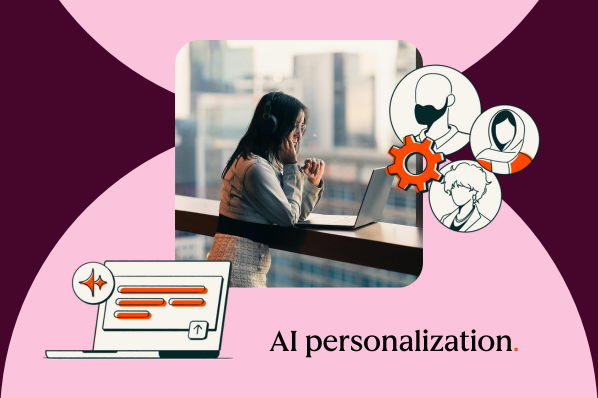
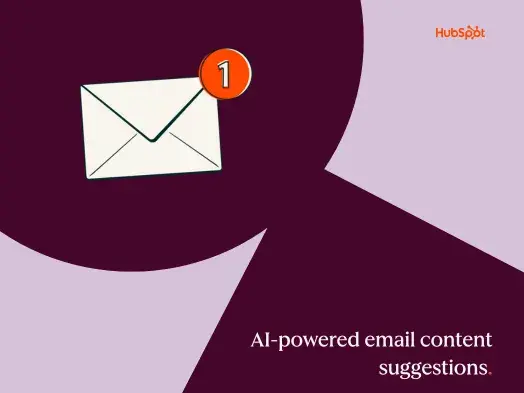

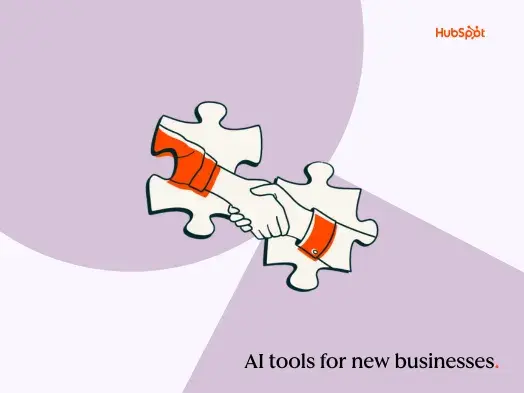
![AI email subject lines that drive 3x more revenue and actually convert [+ exclusive insights]](https://53.fs1.hubspotusercontent-na1.net/hubfs/53/ai-email-optimization-1-20251014-4500151-1.webp)

